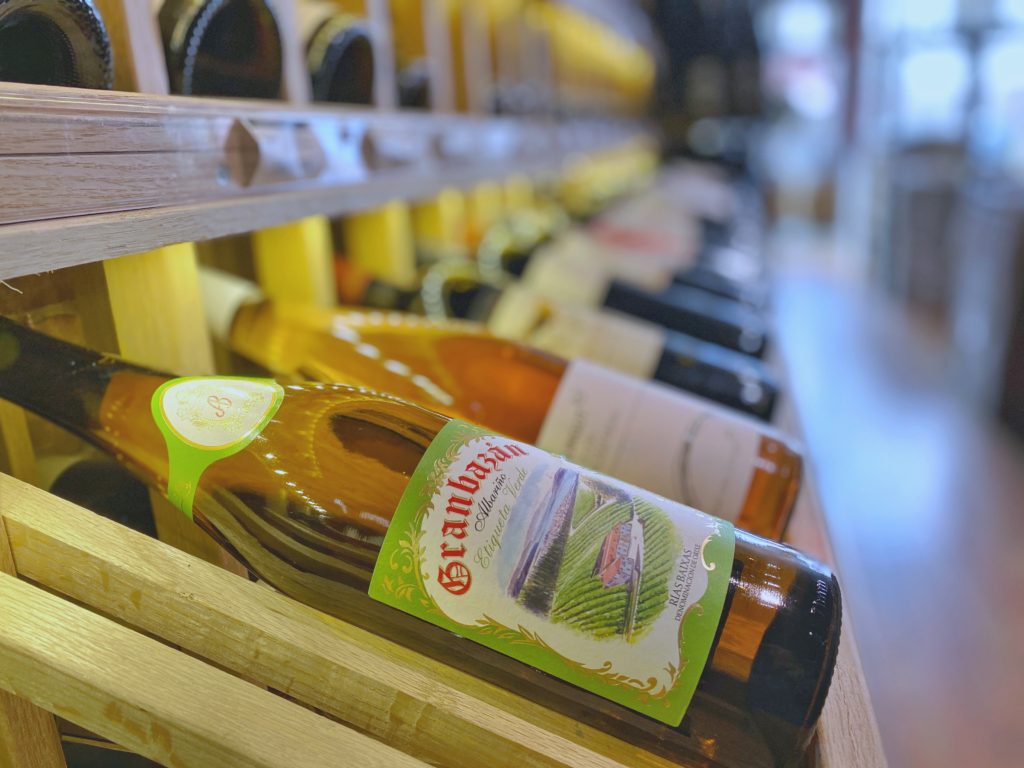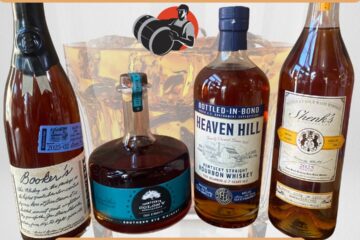Friday, February 14th & Saturday, February 15th, 2020
1. Granbazan Rias Baixas Albariño
Cooper’s Price $18.99
Granbazán farms 17 hectares of Albariño vines in Val do Salnés, the sub-region of the Rías Baixas which is centered around the town of Cambados. Val do Salnés is the site of the oldest Albariño plantations. It is also the coldest and wettest of the five sub-regions. The average temperature for the year is 55°F and it rarely exceeds 85°F, even in the hottest part of the summer. Grapes are trained in the traditional pergola fashion and soils are based on granite with alluvial topsoil. Granbazán supplements their estate fruit with long-term contracts with smallholders in the area.
Etiqueta Verde, or ‘Green Label,’ is the entry-level offering from Granbazán. The grapes are hand-harvested and de-stemmed before undergoing a cool pre-fermentation maceration which helps to lock in and amplify aromas and structure. Etiqueta Verde is made with a combination of free-run juice and lightly pressed juice. It is aged on the lees for no less than four months before bottling. This is a classic Salnés Valley style albariño. Dry, very floral, with crisp acidity, and elegant salty aftertaste.
2. Müller-Grossman Rose Vom Zweigelt
Cooper’s Price $14.99
Helma Müller-Grossmann, the humorous winemaker, has led the vineyard since 1986, with a high commitment to tradition (which might be the reason for her popularity). At the foot of Göttweig Mountain, in the traditional wine-growing region Kremstal, Helma and her daughter Marlies Müller-Grossmann cultivate 10 hectares of vineyards. The ultimate aim is to create delight – in harmony with nature and top-quality.Owner, Helma Müller-Grossmann and her daughter Marlies are a part of an association called “Women and their Vines” that promotes friendship and community for female winemakers in Austria.
Harvest by hand, Fermentation under controlled temperature in a stainless steel tank. A gentle hint of rosehip tea joins the summery citrus notes on the nose. Its subtle strawberry flavors are highlighted with lemon, and dashes of acidity. The palate is light, dry, crisp and refreshing.
3. Papa Figos Douro Vinho Tinto
Cooper’s Price $14.99
This producer, founded in 1952, is named after the legendary Porto matriarch Dona Antónia Ferreira. Affectionately nicknamed ‘Ferreirinha’ by her countrymen, the house pays homage to her memory and was the first house in the region dedicated to making light wines. Purchased by Sogrape in 1987, it has 520 hectares of vineyard in the Douro. The winemaking is headed up by Luís Sottomayor, who restrains the Douro’s natural exuberance to produce wines that have a freshness, allied with lovely depth and texture.Papa Figos is one of the rarest birds of the Douro. It is a migratory bird with a bright and attractive plumage, which arrives in the Douro region during the spring when the vines begin to bloom, and it heads south in late summer, when the harvest is being prepared.
A blend of indigenous varietals including Touriga Nacional, Touriga Franca, Tinta Roriz & Tinta Barroca. The grapes are selected from the Douro Superior region, with around 25% coming from Quinta da Leda and the rest from producers owning vineyards that ideally face north or are at a relatively high altitude of up to 400 metres. Around 25% of the wine was aged in used French oak barrels with the remainder left in stainless steel tanks. The final blend is made eight months after harvest, and bottled after 12 months.
Aromas and flavors of ripe red fruits, like plum and strawberry. There are also notes of cedar & spices, w/ a hint of oak. The palate also reveals ripe red fruits and has elegant body, well-integrated acidity, and fine-quality tannins, with a balanced, harmonious and extended finish.
4. Conti Setoli Salis “Corte della Meridiana” Nebbiolo
Regular Price $30.99 Cooper’s Price $26.99
“Fratelli Salis” (the Salis brothers), so-called on the label and on antique shipping documents, were among the first wine makers to bottle wine in the entire Kingdom of Italy. Bottles dating back to 1881 and 1890 have been found In the family wine cellar, saved and carried along during the family’s many changes of residence. Among the various certificates of distinction received over the years, the most important refers to “Tirano bottled wine of 1869”. At that time, only a few makers of Barolo and Marsala were putting their wine into bottles. Salis wine production, beyond satisfying the needs of the immediate family, also aimed to create high-quality wines which would best show off the distinctive characteristics of the local vintages. These wines were intended to be sent to other Swiss and European noble families with whom the Salis family maintained diplomatic ties.
The wine shows a brilliant ruby red color and nuances of garnet, with moderate transparency. The nose reveals intense, pleasing and refined aromas that start with hints of cherry and raspberry, followed by plum, dried violet, rose petals, licorice, and hints of vanilla. The palate follows the nose, with balanced flavors, integrated tannins, and shows a certain rusticity. The finish is persistent with flavors of plum and black cherry. This wine is produced with the technique of “rinforzo” (adding of grape must from dried grapes), and ages for 18 months in cask and for at least 6 months in bottle.


